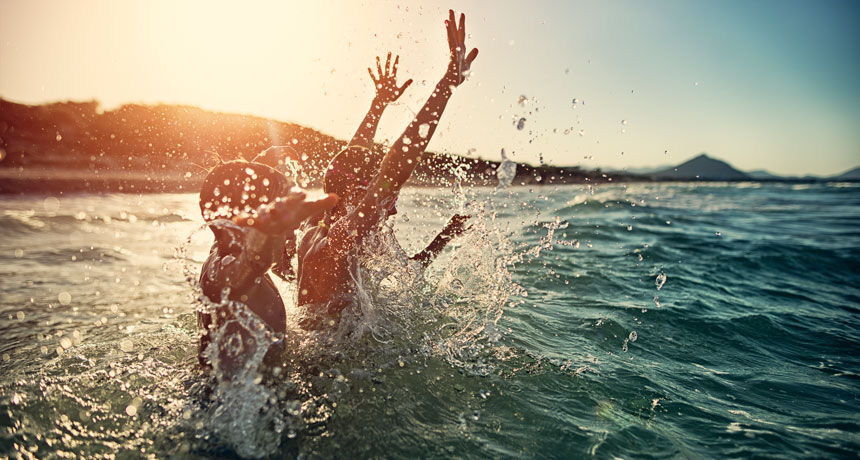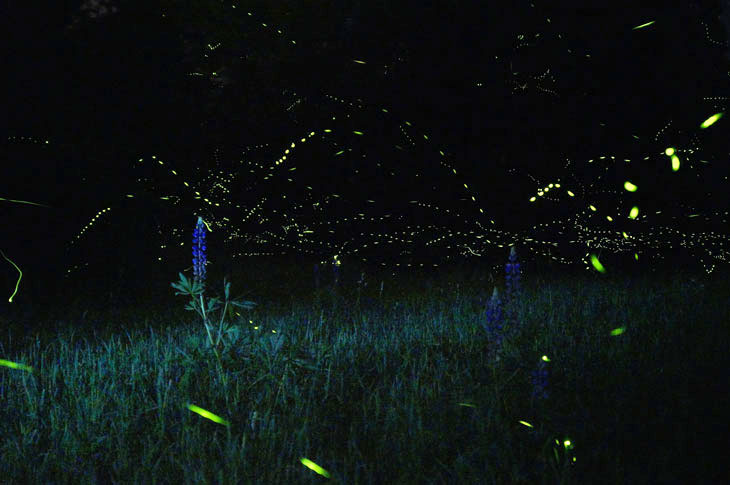Breaking down the science behind some of your favorite summer activities
From pool swimming to trail hiking, some warm weather activities can be safer with science

MAKE A SPLASH As temperatures soar, many people dive underwater to beat the heat. Some studies have suggested ways to make summertime swimming a bit safer.
Imgorthand/Getty Images Plus
- More than 2 years ago
Summer brings the heat — and in some cases a lot of it, as those who suffered through record-breaking heat waves in Europe and South Asia in June can attest. But the season also ushers in long days filled with plenty of possibilities for outdoor fun. Parks fill with picnickers. Mountain trails fill with hikers. And beaches and pools swarm with swimmers trying to beat the heat.
Here’s what science has to tell us about some of our favorite summer activities.
Frolicking in forests
There’s hiking, and then there’s shinrin-yoku, the Japanese practice of “forest bathing.” Those who forest bathe walk slowly and breathe deeply — almost like a form of meditation. Developed in the 1980s, forest bathing has been gaining in popularity in the United States over the last few years. At least three books about the practice were published in the United States in 2018. Spending time among trees may improve health, from boosting the immune system to lowering blood pressure, the thinking goes. Some small studies have indicated possible benefits, an analysis published in 2017 in the International Journal of Environmental Research and Public Health, found. Research is ongoing.
Chasing fireflies
In the forests of Tennessee’s Great Smoky Mountains, spectators gather each summer to watch fireflies put on a dazzling synchronized light show. Scientists still aren’t sure why those flashes sync up. One lingering mystery that has been solved, though, is why the insects’ behinds blink in the first place. Besides attracting mates, the light is also a warning to predators, scientists have found. In laboratory experiments, bats took about twice as long to learn that fireflies tasted bad when the bugs’ lights were covered by black paint. The findings confirmed a theory first proposed by entomologists in 1882.

Catching rays
Do you know where your summer tan comes from? The sun’s ultraviolet rays are responsible for most of it, but UV light from nearby stars and other galaxies contributes a tiny bit — less than one-billionth of 1 percent of it, to be exact. Even light from the Big Bang contributes roughly 0.001 percent, astronomers have calculated.
If you’re working on perfecting that tan, sit poolside every other day — your skin will get darker and avoid some damage. That’s because skin produces melanin, a protective pigment, in 48-hour cycles, researchers say. Sunbathing day-after-day can disrupt this cycle and leave skin vulnerable to ultraviolet rays — and sunburn. And of course, don’t forget the sunscreen.
Words of warning
Animals have all sorts of ways to beat the heat, from blowflies cooling their drool to toucans boosting blood flow to their big beaks. We humans often tend to flock to swimming pools and beaches to cool off. Before diving in, though, here are some rules of thumb to ensure a safer swim:
Don’t pee in the pool. The chlorine in pool water reacts with nitrogen in urine to produce a toxic chemical called cyanogen chloride. This chemical, which acts like a tear gas, is classified as an agent of chemical warfare. Thankfully, it would probably take a lot of chlorine — way more than is allowed in swimming pools — and a lot of urine to conjure up harmful levels of cyanogen chloride. Still, mixing urine and chlorine produces other chemicals that in small amounts can irritate airways.
Don’t drink the pool water. Besides often containing chlorine and pee, pool water can be rife with fecal matter and bacteria. Nearly 500 outbreaks of bacterial infections linked to pool water were reported in 46 states and Puerto Rico from 2000 to 2014, the last year for which data are available from the U.S. Centers for Disease Control and Prevention. Those tainted basins included hotel pools and hot tubs, water parks and other recreational facilities including public parks. The outbreaks resulted in more than 27,000 illnesses and eight deaths.
Don’t ingest lake water, either. There’s a very small chance that killer amoebas could make their way up your nose and into your brain. Naegleria fowleri is commonly known as the brain-eating amoeba, but the nickname is something of a misnomer, scientists contend. The single-celled organism, which thrives in warm freshwater, doesn’t actually eat swimmers’ brains. Instead, N. fowleri triggers inflammation — the body’s immune response to invaders — leading to brain swelling and death. Cases are rare, though. Just 141 people died in the United States from 1962 to 2018, the CDC reports. The key to survival is a quick diagnosis, anti-amoeba drugs and reducing brain swelling, scientists say.







